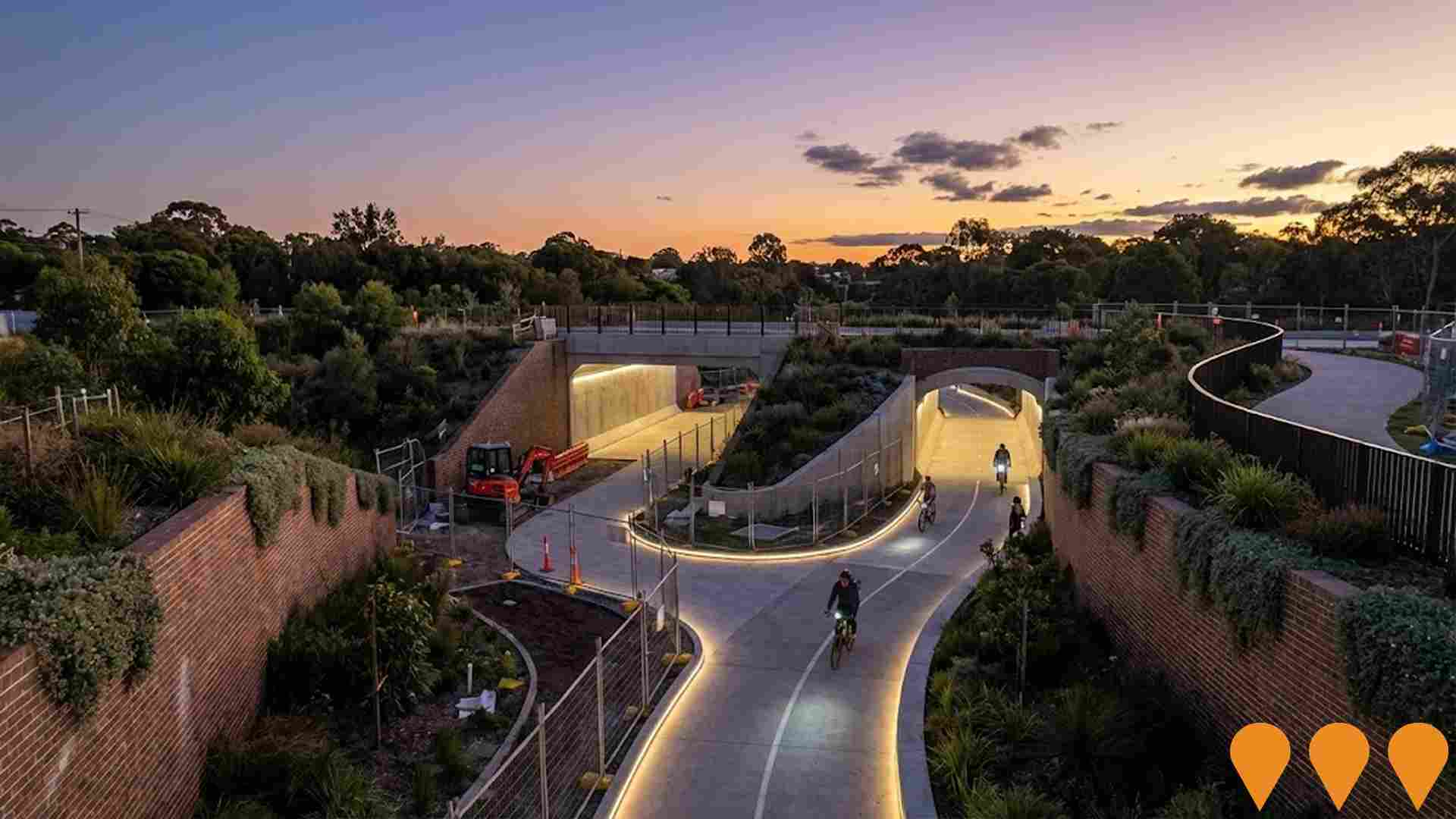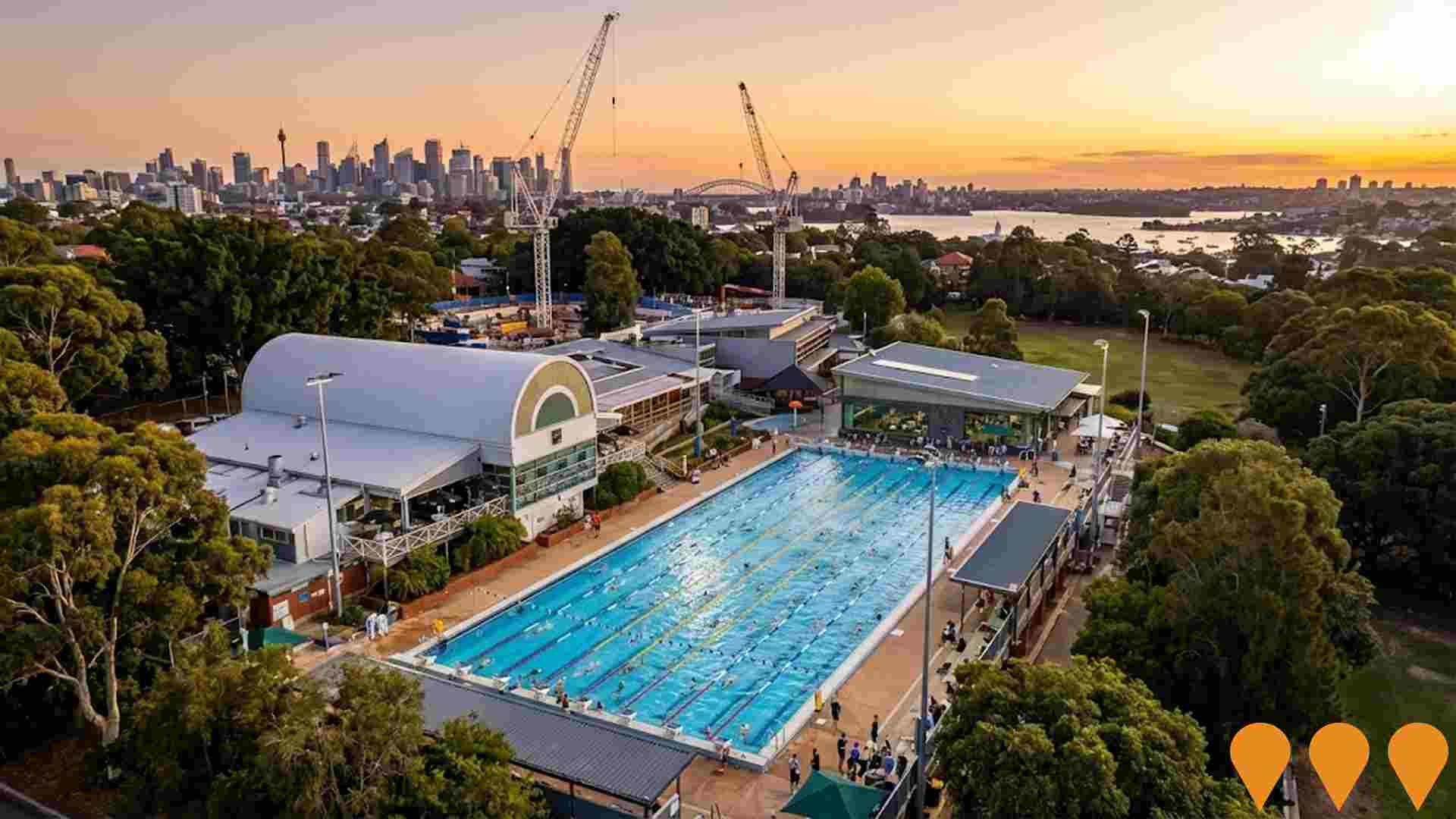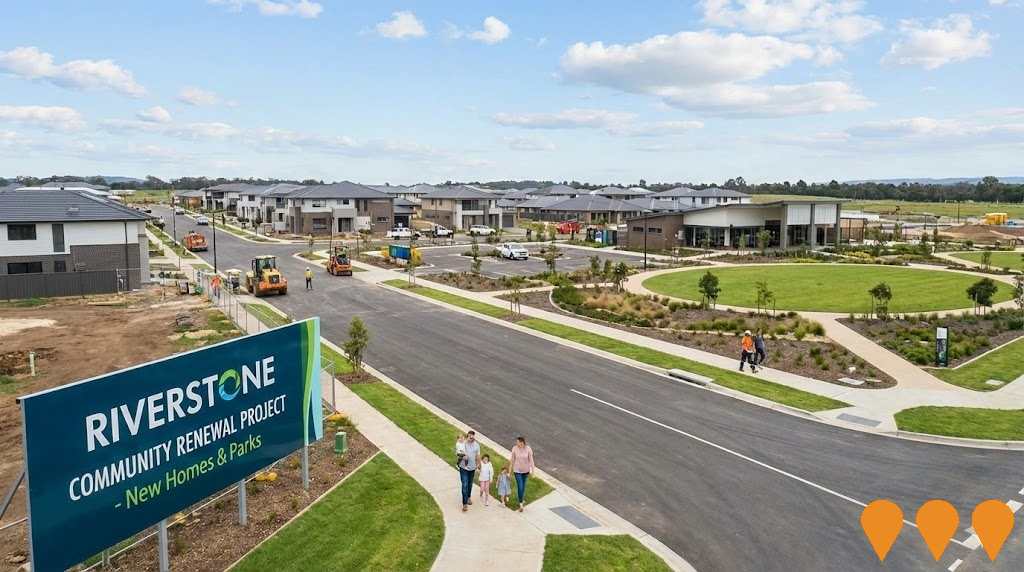Chart Color Schemes
est. as @ -- *
ABS ERP | -- people | --
2021 Census | -- people
Sales Activity
Curious about local property values? Filter the chart to assess the volume and appreciation (including resales) trends and regional comparisons, or scroll to the map below view this information at an individual property level.
Find a Recent Sale
Sales Detail
Population
Haberfield - Summer Hill has shown very soft population growth performance across periods assessed by AreaSearch
Based on AreaSearch's analysis, Haberfield - Summer Hill's population is around 14,007 as of Nov 2025. This reflects an increase of 487 people (3.6%) since the Census conducted in Apr 2021, which reported a population of 13,520 people. The change is inferred from the estimated resident population of 14,007 as of Jun 2024 and an additional 47 validated new addresses since the Census date. This level of population equates to a density ratio of 4,036 persons per square kilometer, placing Haberfield - Summer Hill in the top 10% of national locations assessed by AreaSearch. The area's 3.6% growth since census positions it within 2.8 percentage points of the SA4 region (6.4%), indicating competitive growth fundamentals. Population growth for the area was primarily driven by overseas migration.
AreaSearch is adopting ABS/Geoscience Australia projections released in Dec 2024 with a base year of 2022, and NSW State Government's SA2 level projections released in Feb 2022 with a base year of 2021 for areas not covered by the first data set. Growth rates by age group from these aggregations are applied to all areas for years 2032 to 2041. Over this period, projections indicate an overall population decline, with Haberfield - Summer Hill's population expected to shrink by 319 persons by Apr 2041. However, growth across specific age cohorts is anticipated, led by the 75 to 84 age group, projected to expand by 368 people.
Frequently Asked Questions - Population
Development
The level of residential development activity in Haberfield - Summer Hill is very low in comparison to the average area assessed nationally by AreaSearch
Haberfield-Summer Hill has seen approximately 13 new homes approved annually. Over the past five financial years, from FY21 to FY25, around 66 homes were approved, with another 3 approved so far in FY26. On average, about 0.1 new residents have moved into each newly approved home over these five years.
This suggests that new housing supply is keeping pace with or exceeding demand, providing ample buyer choice and creating capacity for population growth beyond current forecasts. The average construction cost value of new dwellings has been around $389,000. In FY26, commercial development approvals totaled $43.6 million, indicating high levels of local commercial activity. Compared to Greater Sydney, Haberfield-Summer Hill shows significantly reduced construction activity, with 81% below the regional average per person. This scarcity typically strengthens demand and prices for existing properties due to limited new supply. Nationally, this activity is also below average, reflecting the area's maturity and possible planning constraints. The approved housing mix in Haberfield-Summer Hill consists of approximately 20% detached houses and 80% medium to high-density housing.
This shift from the current housing mix (45% houses) reflects reduced availability of development sites and addresses shifting lifestyle demands and affordability requirements, providing more affordable entry points for downsizers, investors, and first-home buyers. With around 4472 people per dwelling approval, Haberfield-Summer Hill demonstrates an established market. Given stable or declining population projections, the area is expected to see reduced housing demand pressures in the future, benefiting potential buyers.
Frequently Asked Questions - Development
Infrastructure
Haberfield - Summer Hill has very high levels of nearby infrastructure activity, ranking in the top 10% nationally
The performance of a region is significantly influenced by changes in local infrastructure, major projects, and planning initiatives. AreaSearch has identified 57 such projects that could potentially impact this area. Notable among these are the Sydney Metro Sydenham to Bankstown Conversion project, the Inner West GreenWay (Cooks to Cove), the Amici Apartments development, and the Hill Street Apartments construction. The following list provides details on those projects likely to be most relevant.
Professional plan users can use the search below to filter and access additional projects.
INFRASTRUCTURE SEARCH
 Denotes AI-based impression for illustrative purposes only, not to be taken as definitive under any circumstances. Please follow links and conduct other investigations from the project's source for actual imagery. Developers and project owners wishing us to use original imagery please Contact Us and we will do so.
Denotes AI-based impression for illustrative purposes only, not to be taken as definitive under any circumstances. Please follow links and conduct other investigations from the project's source for actual imagery. Developers and project owners wishing us to use original imagery please Contact Us and we will do so.
Frequently Asked Questions - Infrastructure
Sydenham to Bankstown Transport Oriented Development Program
The Sydenham to Bankstown Transport Oriented Development (TOD) Program provides a strategic planning framework to guide urban renewal along the Sydney Metro City & Southwest line corridor. The initial corridor strategy targeted approximately 35,000 new dwellings across 11 station precincts. The planning approach has evolved, with the NSW Government applying new, state-led TOD planning controls (rezoning) around 31 stations, including Dulwich Hill, to allow for more medium and high-rise housing (up to 9 storeys in some cases) within 400m of the station. This is intended to accelerate housing supply. The state-led TOD controls for the Dulwich Hill precinct were applied in January 2025. The overall Sydney Metro City & Southwest rail line conversion is a related project, which is currently in the construction phase and is expected to be completed in 2026.
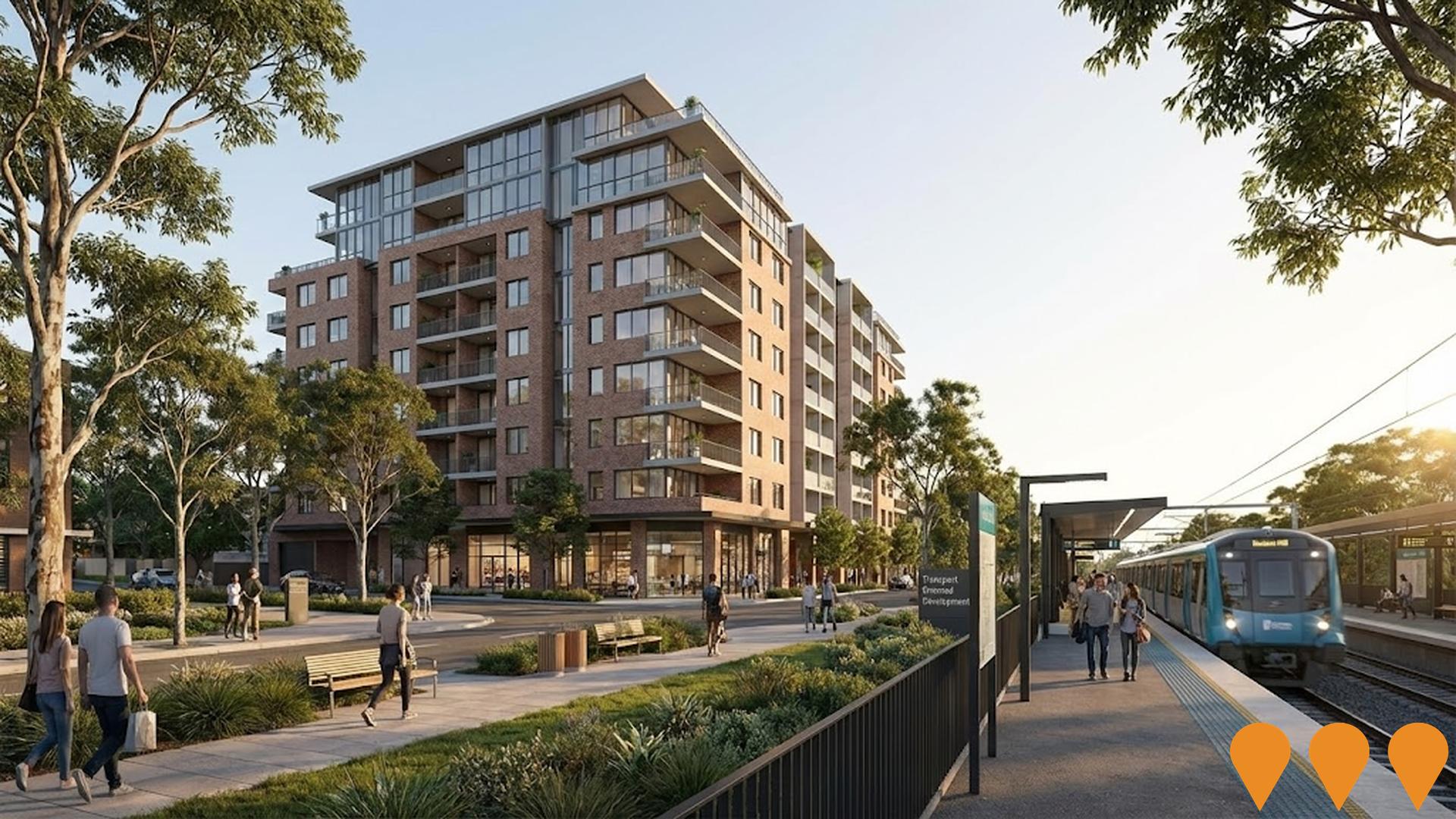
NSW Health Infrastructure Program - Inner West
Part of a $3.4 billion NSW health infrastructure investment, this program includes ongoing hospital upgrades, health facility improvements, and critical maintenance across the Inner West communities. The program is delivered by Health Infrastructure, which manages major health capital projects over $10 million in NSW.
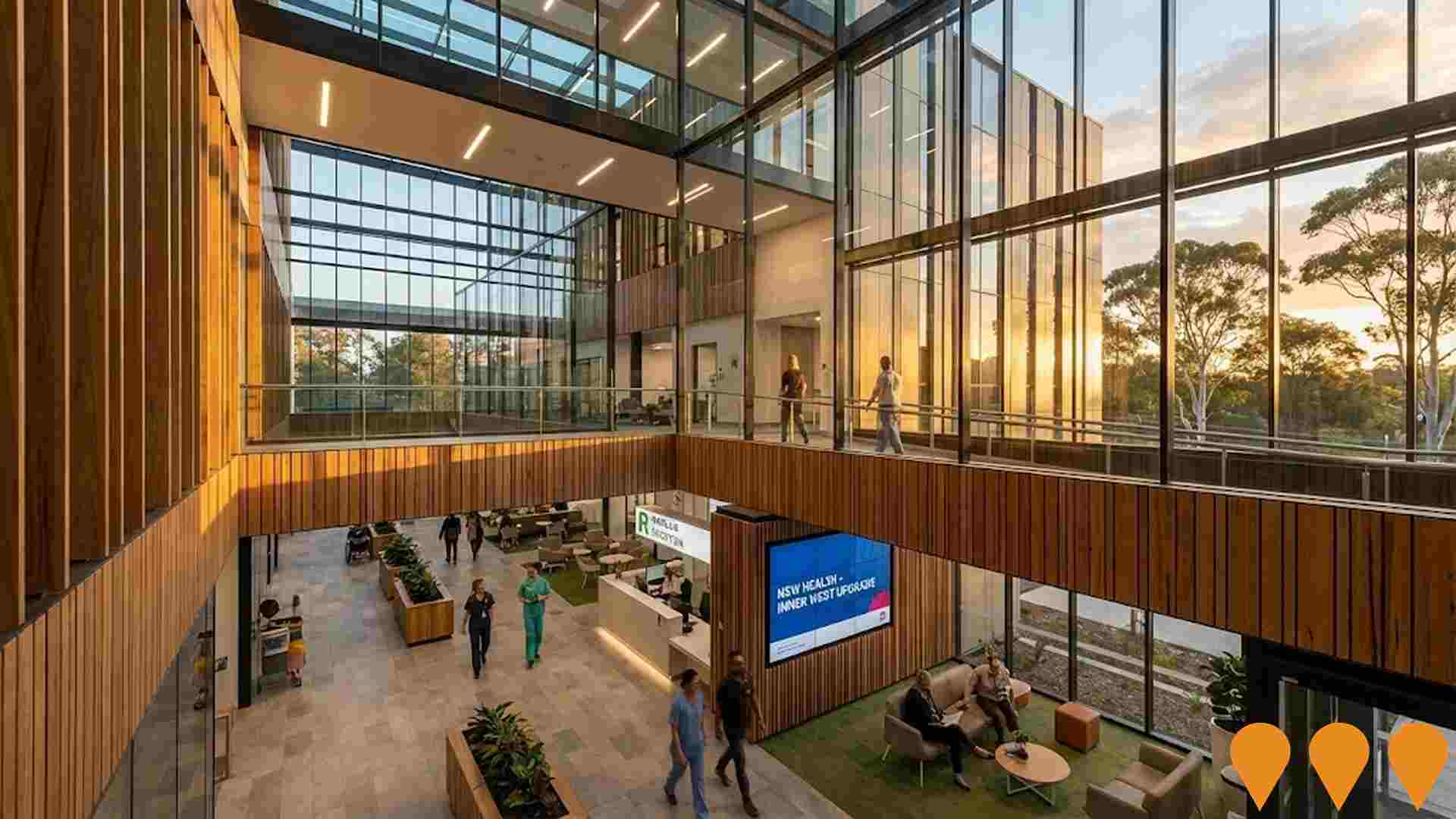
Sydney Metro Sydenham to Bankstown Conversion
Conversion of the existing T3 Bankstown Line (between Sydenham and Bankstown) to modern, high-tech metro standards as part of the Sydney Metro City & Southwest project. The upgrade includes new air-conditioned metro trains running every 4 minutes in peak (15 trains per hour), platform screen doors, new lifts for full accessibility, level access between platforms and trains, and new concourses. Dulwich Hill Station is one of the ten stations being upgraded. The full closure of the line for final conversion works began in September 2024.
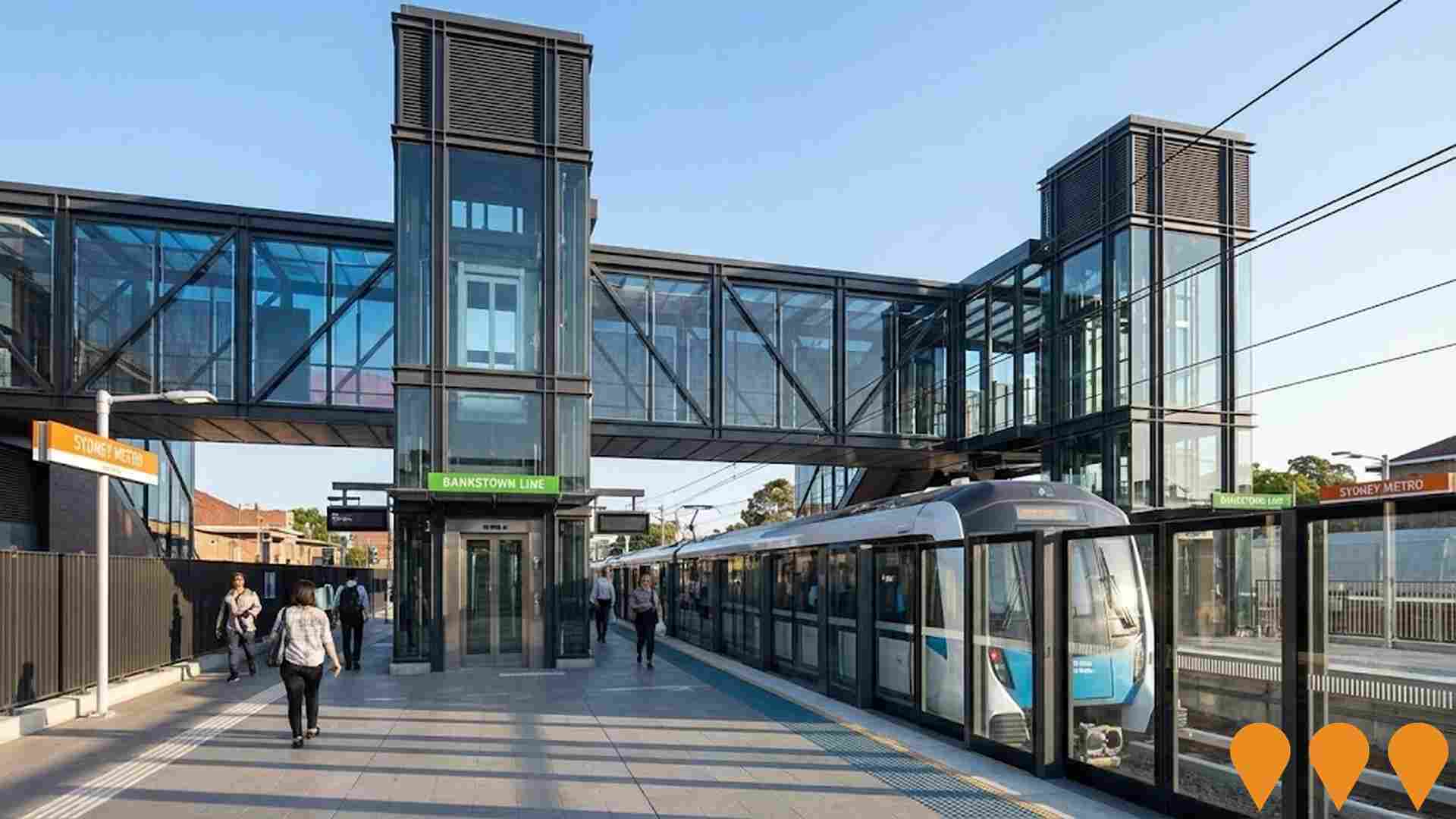
Inner West Housing Investigation Areas
Council-led comprehensive housing strategy (Our Fairer Future Plan) focusing on Housing Investigation Areas around transport nodes including Ashfield, Croydon, Dulwich Hill, Lewisham, Marrickville and others. Includes masterplans for increased density, new parks, plazas, multi-purpose libraries, walking/cycling paths, improved public domain and transport connections. Part of Inner West Council's alternative to NSW Government TOD reforms.

The Flour Mill of Summer Hill
A significant urban renewal, master-planned community development transforming the former Allied Mills Flour Mill site. Features 360 apartments and terrace houses, heritage restoration including the iconic silos and former flour mill bakery building, ground-floor retail and commercial spaces, and new public plazas connected to the Lewisham West Light Rail and Summer Hill Station. The final stage was completed in early 2019.
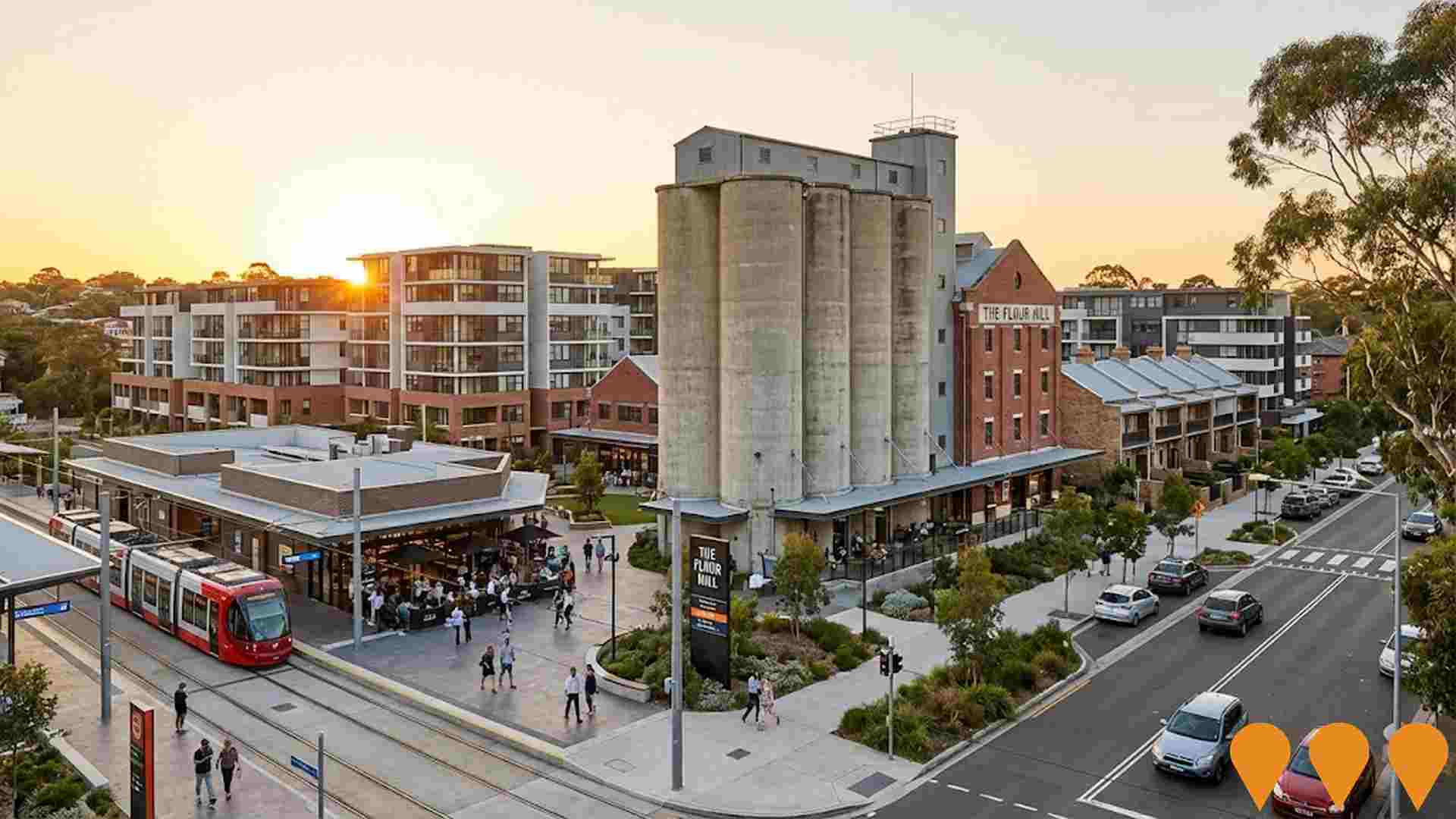
The Flour Mill of Summer Hill
The Flour Mill of Summer Hill is a completed master-planned community redevelopment of the former Allied Mills Flour Mill site, including adaptive reuse of heritage industrial buildings like the Mungo Scott Building and silos. The project delivered 360 apartments and terraces, along with retail and commercial space, and public open space dedicated to Council. It is located near Summer Hill Station and the Lewisham West light rail stop.
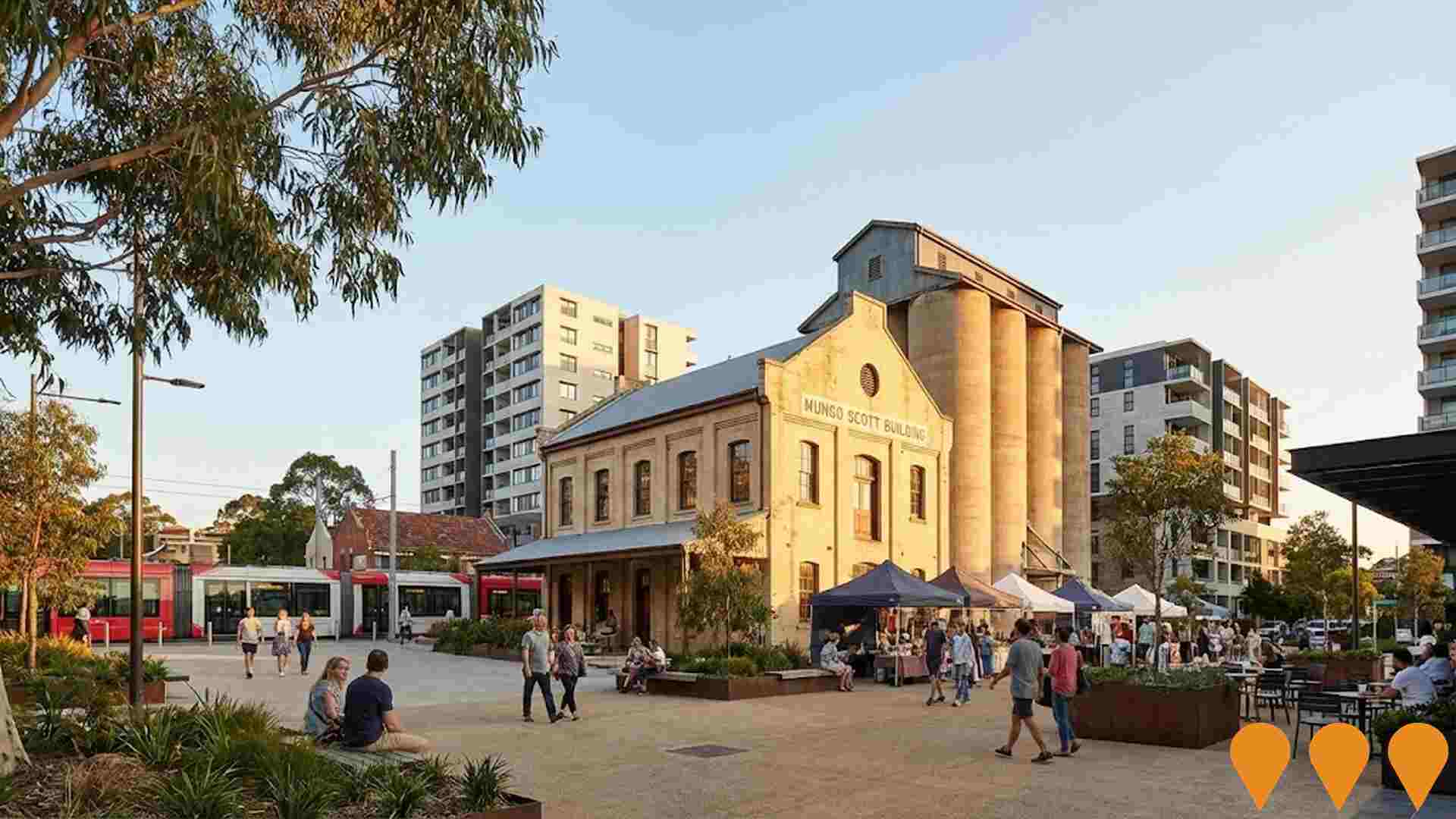
Cooks to Cove GreenWay
The Cooks to Cove GreenWay is an environmental, cultural, and sustainable transport corridor in Sydney's Inner West, linking the Cooks River at Earlwood with the Parramatta River at Iron Cove. It features a 5.8km shared path for walking and cycling, foreshore walks, cultural and historical sites, cafes, bushcare sites, parks, playgrounds, sporting facilities, and ecological restoration along waterways.
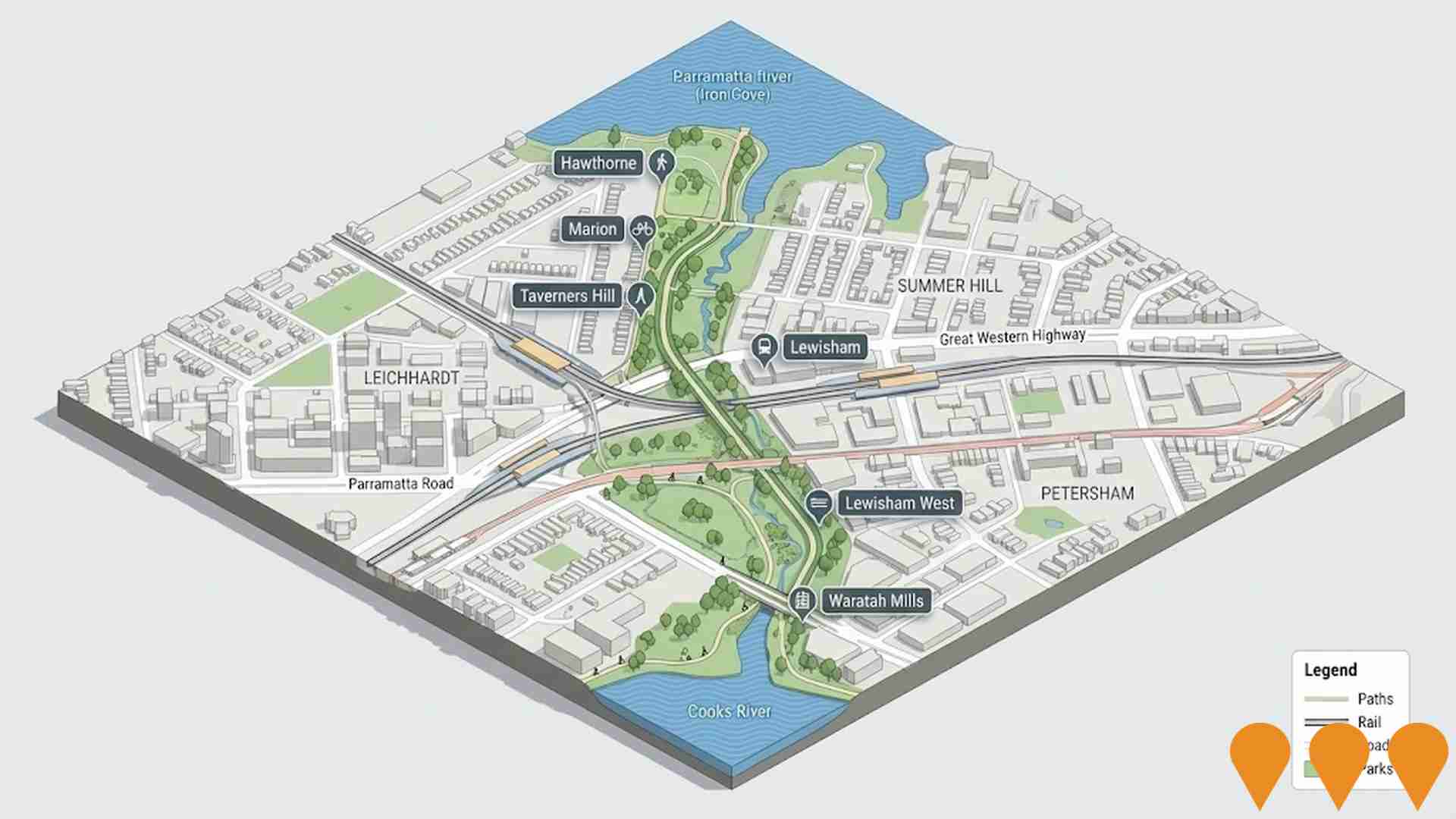
Cardinal Freeman Final Release Development - Wattle Building
The final stage of development at Cardinal Freeman retirement village, featuring the new Wattle building with 41 contemporary independent living apartments. This represents the last opportunity to secure brand-new apartments in this highly sought-after Inner West retirement community. Construction began April 2025 following demolition of the original Building One, with sales launching November 2025 and move-in Spring 2026.

Employment
Employment performance in Haberfield - Summer Hill exceeds national averages across key labour market indicators
Haberfield-Summer Hill has a highly educated workforce with notable representation in the technology sector. The unemployment rate was 3.8% as of June 2025, which is 0.4% lower than Greater Sydney's rate of 4.2%.
Employment grew by an estimated 4.0% over the past year. There were 8,756 residents in work during this period, with a workforce participation rate of 66.6%, compared to Greater Sydney's 60.0%. The leading employment industries among residents are professional & technical, health care & social assistance, and education & training. The area specializes in professional & technical jobs, with an employment share 1.4 times the regional level.
However, construction has limited presence at 5.6%, compared to the regional rate of 8.6%. Employment opportunities may be limited locally as indicated by the Census working population vs resident population count. In the 12-month period ending June 2025, employment increased by 4.0% while labour force grew by 4.2%, resulting in a 0.2 percentage point rise in unemployment rate. In contrast, Greater Sydney experienced employment growth of 2.6% and labour force growth of 2.9%, with a 0.3 percentage point rise in unemployment rate. Jobs and Skills Australia's national employment forecasts from May 2025 project national employment growth of 6.6% over five years and 13.7% over ten years, but growth rates vary significantly between industry sectors. Applying these projections to Haberfield-Summer Hill's employment mix suggests local growth of approximately 7.2% over five years and 14.5% over ten years, based on a simple weighting extrapolation for illustrative purposes.
Frequently Asked Questions - Employment
Income
The economic profile demonstrates exceptional strength, placing the area among the top 10% nationally based on comprehensive AreaSearch income analysis
The latest postcode level ATO data from AreaSearch for financial year 2022 shows Haberfield - Summer Hill had a median income among taxpayers of $68,214 and an average of $107,074. Nationally, these figures are exceptionally high compared to Greater Sydney's median of $56,994 and average of $80,856. Based on Wage Price Index growth of 12.61% since financial year 2022, current estimates for Haberfield - Summer Hill would be approximately $76,816 (median) and $120,576 (average) as of September 2025. According to the 2021 Census, household, family, and personal incomes in Haberfield - Summer Hill rank highly nationally, between the 87th and 90th percentiles. Income distribution data indicates that 28.9% of locals (4,048 people) fall into the $4000+ category, differing from the surrounding region where the $1,500 - 2,999 category predominates at 30.9%. Economic strength is evident with 40.8% of households earning high weekly incomes exceeding $3,000, supporting elevated consumer spending. High housing costs consume 15.9% of income, but strong earnings place disposable income at the 86th percentile nationally. The area's SEIFA income ranking places it in the 9th decile.
Frequently Asked Questions - Income
Housing
Haberfield - Summer Hill displays a diverse mix of dwelling types, with above-average rates of outright home ownership
In Haberfield-Summer Hill as of the latest Census (2016), 45.2% of dwellings were houses while 54.8% were other types such as semi-detached and apartments. This is compared to Sydney metropolitan areas which had 33.5% houses and 66.5% other dwellings. Home ownership in Haberfield-Summer Hill stood at 33.6%, with mortgaged dwellings at 30.0% and rented ones at 36.4%. The median monthly mortgage repayment was $3,000, higher than Sydney's average of $2,436. Median weekly rent in the area was $470 compared to Sydney's $465. Nationally, Haberfield-Summer Hill's mortgage repayments were significantly higher at $1,863 and rents substantially above the national figure of $375.
Frequently Asked Questions - Housing
Household Composition
Haberfield - Summer Hill features high concentrations of group households, with a lower-than-average median household size
Family households account for 67.2% of all households, including 31.5% couples with children, 25.5% couples without children, and 9.1% single parent families. Non-family households constitute the remaining 32.8%, with lone person households at 28.2% and group households comprising 4.6%. The median household size is 2.4 people, which is smaller than the Greater Sydney average of 2.5.
Frequently Asked Questions - Households
Local Schools & Education
Haberfield - Summer Hill shows strong educational performance, ranking in the upper quartile nationally when assessed across multiple qualification and achievement indicators
Educational attainment in Haberfield-Summer Hill is notably high, with 50.3% of residents aged 15 and above holding university qualifications, surpassing both national (30.4%) and NSW (32.2%) averages. Bachelor degrees are the most prevalent at 31.7%, followed by postgraduate qualifications (14.8%) and graduate diplomas (3.8%). Vocational pathways account for 21.7% of qualifications, with advanced diplomas at 9.9% and certificates at 11.8%. Educational participation is high, with 28.7% of residents currently enrolled in formal education, including 8.0% in primary, 7.9% in tertiary, and 7.2% in secondary education.
Haberfield-Summer Hill has five schools with a combined enrollment of 1,649 students as of the latest data (no specific date provided). The area demonstrates significant socio-educational advantages and academic achievement, with an ICSEA score of 1130. All five schools focus exclusively on primary education, with secondary options available in surrounding areas. School places per 100 residents stand at 11.8, below the regional average of 15.9, indicating some students may attend schools in adjacent areas.
Frequently Asked Questions - Education
Schools Detail
Nearby Services & Amenities
Transport
Transport servicing is high compared to other areas nationally based on assessment of service frequency, route connectivity and accessibility
Public transport analysis shows 58 active transport stops operating within Haberfield - Summer Hill. These include a mix of train and bus services. There are 36 individual routes servicing these stops, collectively providing 5,614 weekly passenger trips.
Transport accessibility is rated excellent, with residents typically located 158 meters from the nearest stop. Service frequency averages 802 trips per day across all routes, equating to approximately 96 weekly trips per individual stop.
Frequently Asked Questions - Transport
Transport Stops Detail
Health
Haberfield - Summer Hill's residents are healthier than average in comparison to broader Australia with prevalence of common health conditions quite low across both younger and older age cohorts
Haberfield-Summer Hill residents show low prevalence of common health conditions across both younger and older age groups. Private health cover is exceptionally high at approximately 75% of the total population (10,463 people), compared to 57.3% in Greater Sydney and a national average of 55.3%. The most prevalent medical conditions are mental health issues affecting 9.4% of residents and arthritis impacting 6.9%, while 69.9% report no medical ailments, compared to 77.0% in Greater Sydney.
The area has 17.0% of residents aged 65 and over (2,378 people), higher than the 14.5% in Greater Sydney. Health outcomes among seniors are above average and broadly align with the general population's health profile.
Frequently Asked Questions - Health
Cultural Diversity
Haberfield - Summer Hill was found to be more culturally diverse than the vast majority of local markets in Australia, upon assessment of a range of language and cultural background related metrics
Haberfield-Summer Hill, surveyed in June 2016, showed higher cultural diversity than most local areas, with 31.2% born overseas and 27.3% speaking languages other than English at home. Christianity was the dominant religion, at 48.3%. Judaism, however, was more prevalent here (0.4%) compared to Greater Sydney's average (0.2%).
For ancestry, top groups were English (19.7%, regional avg: 12.9%), Australian (17.3%, regional avg: 11.5%), and Italian (12.9%, regional avg: 5.9%). Notably, Hungarian (0.5% vs 0.3%) and Korean (0.9% vs 2.8%) groups were overrepresented compared to regional averages.
Frequently Asked Questions - Diversity
Age
Haberfield - Summer Hill's population is slightly older than the national pattern
Haberfield-Summer Hill has a median age of 40, which is slightly higher than Greater Sydney's figure of 37 and Australia's median age of 38. Compared to Greater Sydney, the 55-64 age group is notably over-represented in Haberfield-Summer Hill (12.4% locally), while the 5-14 year-olds are under-represented (9.5%). Between 2021 and present, the 15 to 24 age group has grown from 11.3% to 12.7% of the population. Conversely, the 5 to 14 cohort has declined from 10.6% to 9.5%, and the 45 to 54 age group has dropped from 14.8% to 13.8%. By 2041, demographic modeling suggests Haberfield-Summer Hill's age profile will significantly evolve. The 75 to 84 age cohort is projected to expand by 345 people (45%), from 773 to 1,119. Notably, the combined 65+ age groups are expected to account for 97% of total population growth, reflecting the area's aging demographic profile. Meanwhile, the 45 to 54 and 0 to 4 age cohorts are projected to experience population declines.
